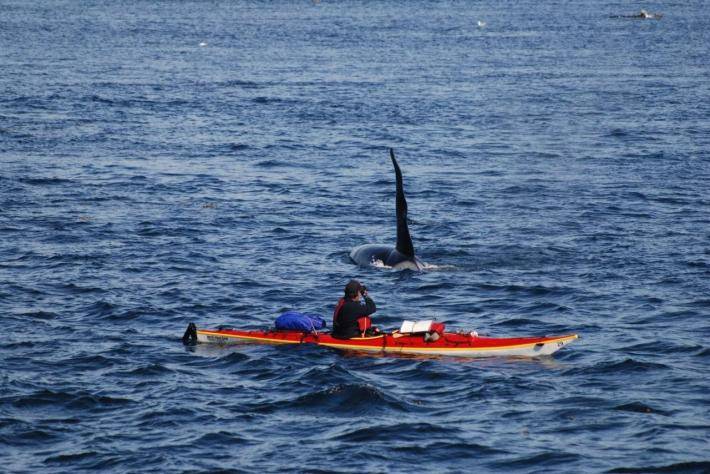By Bob Friel
SeaDoc Society
Half a century into the Digital Age it sometimes feels like we’re evolving from animals to house plants, rooted to our chairs and sustained only by the light of glowing screens. Americans, though, are traditionally outdoorsy types, and the latest survey from the U.S. Fish & Wildlife Service proves that omnipresent electronic devices have not killed our desire to get outside.
USFWS’s National Survey of Fishing, Hunting, and Wildlife-Associated Recreation is completed every five years to gauge the economic impact of certain outdoor activities. The most recent figures show that 35.8 million Americans over the age of 16 fished, and 11.5 million of them hunted in 2016. Those are impressive numbers, and hunters and fishers have long done a good job of using their economic clout to lobby for laws and regulations that benefit their pursuits —and, often, to protect the natural areas they use.
Less organized are those who fall under the “Wildlife-Associated Recreation” segment. The survey doesn’t tally anyone under this column if they’re headed outside to bike or run or kayak or camp; it counts only those Americans who say they specifically go out to find and observe wildlife.
These are the birdwatchers, whale watchers, bug lovers, tide poolers, scuba diving fish watchers, wildlife photographers and other critter hounds among us. And whether we’re simply enjoying backyard hummingbirds, watching orcas from a rocky bluff, or off on a bucket-listed trek up a salmon stream to see grizzlies, there are a whole lot of us out there.
The USFWS reports that, in 2016, 86 million Americans ventured out to look for wildlife (the cutoff at age 16 means that’s certainly an undercount). And those wildlife voyeurs spent $75.9 billion just to watch, which is almost three times what hunters spent and nearly $30 billion more than recreational fishers.
Perhaps even more surprising to find out, in today’s digital parlance, wildlife watching is trending. Since the last study, overall participation is up 20 percent and expenditures are up 28 percent.
As SeaDoc’s recent study on the money generated locally just by our Salish Sea scuba divers shows, the monetary value of having functional ecosystems filled with watchable wildlife is enormous.
Billions of dollars and thousands of supported jobs aside, wildlife watching is proven to benefit— mentally and physically — anyone willing to uproot and unplug for a dose of the outdoors. People living around the Salish Sea normally cite the region’s natural attractions as a primary benefit of living here.
However, not everyone calculates value the same way. Some might say it’s not worth saving a wild salmon run when there are farmed fish at the market. Others might think a pipeline or refinery is worth more than the increased risk of extinction to our Southern resident killer whales. For the folks motivated by dollars and cents, the USFWS reports that there are at least 75.9 billion reasons to protect wildlife in the United States.
Here at SeaDoc, we and our supporters like you understand that even if the value of a healthy Salish Sea can be counted in dollars, it’s better measured with the senses. The well-being, the quality of life, the effects on human health, the satisfaction of being part of a vibrant and vital ecosystem are all priceless.
Besides, we like to watch.



